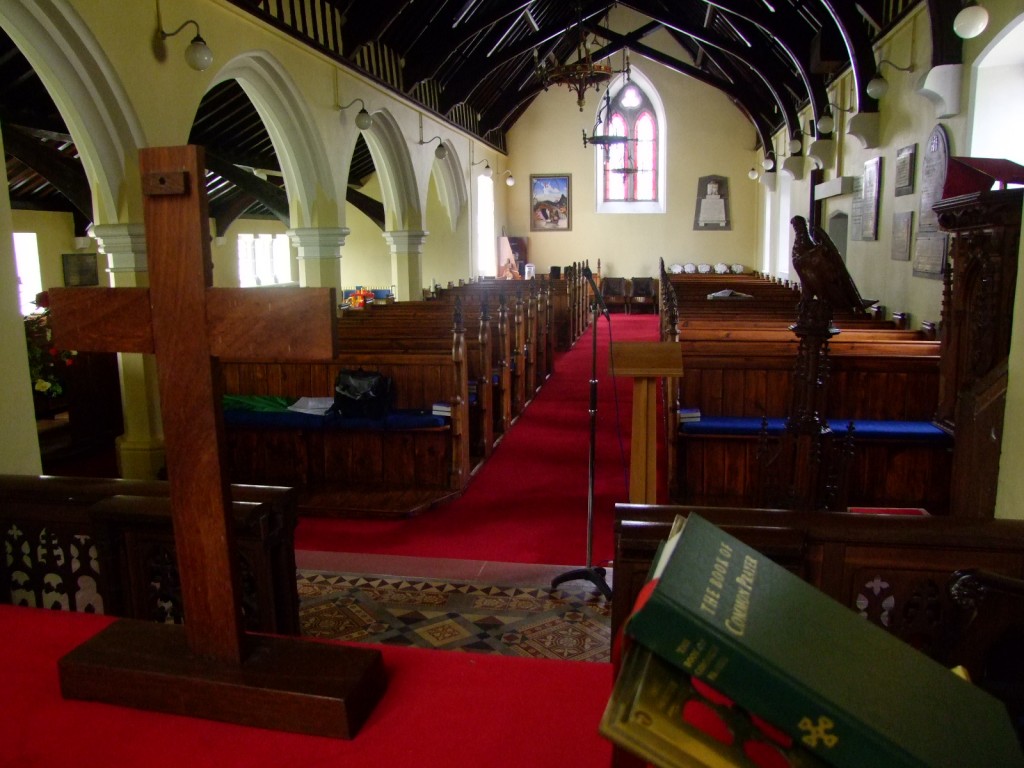
Kieran’s Our City, Our Town article
Cork Independent
In the Footsteps of St. Finbarre (Part 214)
The Resilient Landscape
Rev. J.H. Cole’s compiled notes of 1903 on the church and parish records of the United Diocese of Cork, Cloyne and Ross gives much historic information on many religious sites. The multiple sites and the people who oversaw religious worship at such sites offer insights into the depth of legacy of the Church of Ireland in Irish community life. Rev. Cole also highlights the roots of clergymen, their education and career. Those details seem to shine a further light on the importance of religion and faith in building communities.
By 1826, Henry Theophilus Moore Hodder is recorded as the precentor at St Peter’s Carrigrohane. The Protestant Population of Carrigrohane stood at 163 and in nearby Currikippane at 57. Samuel Lewis in 1837 notes that; “The living is a rectory in the Diocese of Cork united from time immemorial to the rectories of Currikippane and Corbally, and to one-fourth of the rectory of Kinneagh, which four parishes constitute the corps of the precentorship of the cathedral of St. Finbarr, Cork”. The tithes of the Carrigrohane parish amount came to £330, and of the whole union to £943. There was no glebe-house in the union.
The next significant event recorded by Rev Cole is in 1851. Henry T.M. Hodder invested in the construction of a new chancel, a west end, a tower and a timber and slate spire. It’s difficult to interpret this move of reconstruction. Historically, this was a time post famine and a time of shock and trauma and a time of re-building. However, at this time, church building up to the time of the famine was enormous – between Catholic churches being built in the post emancipation years to the revamp of Protestant. St. Peter’s Church would have been one of the first churches in County Cork to be revamped in the post famine years. It perhaps was a statement of resilience in the face of enormous social change. Style wise it was not something new but would have lifted spirits, provided some employment and showed an interest in being innovative in the local area of Carrigrohane.
Michael Gerard Costello in an MA thesis in Geography in 1994 on the symbolic geography of church construction in Cork makes some very interesting points on the importance of interpreting symbolism within Church of Ireland churches. The revamping of Protestant Churches was quite common in the nineteenth century. It was part of a new wave of interest and investment by the Protestant community. Revamped churches were part of a re-investment in faith and community. It showed resilience in group identification; perhaps in a sense a newly revamped church seemed to become a stronghold of established faith. In light of enormous social change, revamped churches became about solidarity and of ensuring continuity.
Whether or which, St Peter’s Carrigrohane was part of a wider cog of the Church of Ireland. From my own explorations in the City and County, Protestant churches are fantastic buildings to engage with. They are very beautiful structures with enormous attention to detail whether that be through the cut stone or stained windows, pews and even emblems, plaques and memorials on walls. Those that remain working churches complete with roof and their fittings reveal much about the power of symbolism and morality. Stories from the bible are told through imagery and one can see how an architect works to draw in the future viewer and about moving the imagination.
The one stained glass window in St Peter’s particularly draws my own imagination. Its colours and figures, which depict temperance, gratitude and justice, seem to stand remind one of the importance of human efforts in remembering the work and finances that go into a church project. It also remembers Arthur Lionel Tobin, the only child of Thomas and Catherine Tobin of Ballincollig Gunpowder Mills. Shortly after taking up his position as managing director in 1835, Thomas married Catherine Ellis, daughter of Lister Ellis of Crofthead, Cumberland, on 12 September 1835. They had one child, a son, Arthur Lionel, who was born in Ballincollig on 7 August 1837.
Arthur in time became a lieutenant in the 23rd Royal Welch Fusiliers. The Royal Welch Fusiliers was a regiment of the British Army, part of the Prince of Wales’ Division. The light infantry and grenadier companies of the Fusiliers saw bloody action in the American War of Independence. The regiment also participated in the Napoleonic Wars – for example, at Waterloo, in the 4th Brigade.
Arthur served in the Crimean War and in the Indian colonial wars. He was wounded in the thigh while fighting at the capture of Kaiserbogh, Lucknow (16 March 1858) and died on 12 October 1858. He was buried near Lucknow. Thomas and Catherine were very saddened by the death of their only son and child at 21 years of age. To commemorate his son, Thomas presented a stained glass window to St. Peter’s Church, Carrigrohane, He also presented it as a memorial to the Royal Welsh Fusiliers. The window was executed by Henry Holiday and W.G Saunders, two major figures in stained glass art of the nineteenth century.
To be continued…
Thanks to Ruth Jackson and Patsy Devoy for their courtesy and insights
Captions:
542a. Interior of St. Peter’s Church, Carrigrohane (pictures: Kieran McCarthy)
542b. Figures, ‘temperance’, ‘gratitude’ and ‘justice’, above the altar stained glass window, St Peter’s Church, Carrigrohane.
